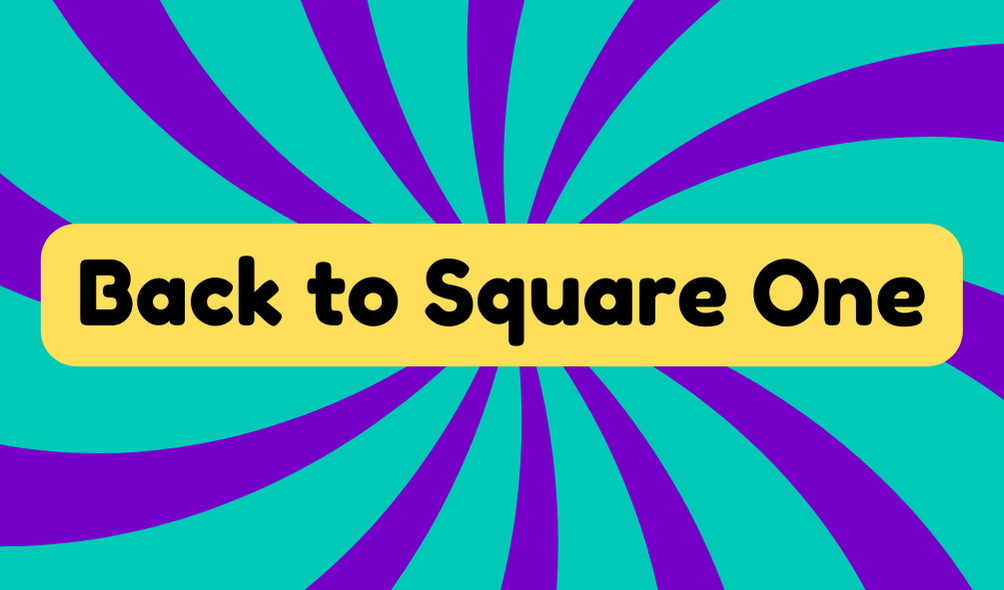The phrase "back to square one" denotes the often frustrating experience of starting over after a setback. Originating in the 1950s and linked to games like Snakes and Ladders, it illustrates the cyclical nature of failure and renewal. This concept is relevant in various contexts, including business and personal development, by emphasizing that failure can lead to opportunities for innovation. Phrases like "resetting strategies" and "beginning again" reinforce this idea. While backtracking can be disheartening, it serves as a reminder to learn from errors and adapt moving forward. Discovering its full significance may offer useful insights.
Synonyms
In discussions of setbacks and the necessity of starting afresh, a range of synonyms for "back to square one" can effectively convey the same sentiment. These alternatives resonate with the foundational idea of resetting or rebooting, encouraging innovative thought processes. Recognizing and utilizing effective terminology can clarify intentions and pave the way for new approaches. Here are some notable options:
- Start from scratch
- Start over
- Begin again
- Reset
Each of these reset options and reboot methods emphasizes the importance of returning to the drawing board after setbacks. Employing varied language not only enriches communication but also inspires fresh perspectives on problem-solving, essential for fostering an innovative mindset.
Example of Sentences
Effective communication often demands concrete examples to illustrate a concept clearly. "Back to square one" serves as a poignant metaphor for moments of setback and the inevitable need to restart. In various scenarios, this phrase highlights the challenges of failure recovery and the pursuit of fresh starts. Consider the following examples:
- A software crash required the team to go back to square one.
- A failed experiment yielded no results, leading the researchers back to square one.
- Unsuccessful negotiations forced both parties to return to square one.
- A proposal rejection sent the project team back to square one.
These scenarios illustrate that setbacks are not the end but rather opportunities for innovation, prompting us to learn, adapt, and begin anew.
Origin
The concept of starting over evokes a sense of resilience that is deeply rooted in linguistic history. This phrase, "back to square one," highlights a common experience of returning to an original point after setbacks. Its historical context is fascinating; the earliest mentions date back to the 1950s, but its roots can be traced through games like Snakes and Ladders and children's hopscotch, both emphasizing the cyclical nature of failure and rebirth. Linguistic evolution shows how this idiom has transcended mere pastime, reflecting broader societal sentiments around innovation and persistence. While it symbolizes frustration, it also encapsulates hope, urging us to confront challenges and embrace reinvention. This duality serves as a reminder of the ongoing journey within human endeavors.
Collocations
Following the broader exploration of the phrase "back to square one," it is essential to contemplate its collocations, which considerably enrich its context and usage. These collocations encapsulate common scenarios, particularly in the domain of restarting projects and overcoming obstacles. Significantly, they reflect diverse perspectives and project dynamics:
- Back to square one after failure
- Starting anew from square one
- Resetting strategies at square one
- Reevaluating plans from square one
Understanding these collocations enables individuals to navigate complex situations with clarity. Each phrase denotes the emotional and practical implications inherent in reverting to the initial stage, emphasizing resilience and strategic retrenchment. Through critical examination of collocations, we gain insight into our capacity to innovate despite setbacks.
How to Use in Everyday Language
Embracing the phrase "back to square one" in everyday language can enhance clarity when discussing setbacks and the need to restart. Utilizing this phrase in everyday conversations can convey the frustration that accompanies failure while also signaling a willingness to reassess strategies. It's a common phrase that resonates in both personal and professional contexts, reminding us that innovation often involves trial and error. However, relying on clichés can diminish the weight of a setback; as a result, it's crucial to use this expression purposefully. While "back to square one" succinctly encapsulates setbacks, pairing it with specific examples in communication fosters a deeper understanding, encouraging constructive dialogue about moving forward and reimagining approaches to challenges effectively.
Why Is It Still Relevant Today?
Why does the phrase "back to square one" resonate with individuals across various domains, from business to personal development? Its cultural significance stems from our shared human experience of facing setbacks. In an era where innovation is paramount, returning to fundamentals can serve as a powerful catalyst for personal growth. This phrase symbolizes the acknowledgment that failure is often a precursor to success, prompting a reevaluation of our methods and perspectives. However, while embracing this reset can foster resilience, it also raises questions about our ability to learn from past mistakes. The challenge lies in transforming setbacks into stepping stones, ensuring that we do not merely revert to the beginning, but instead leverage those experiences to innovate and evolve.







